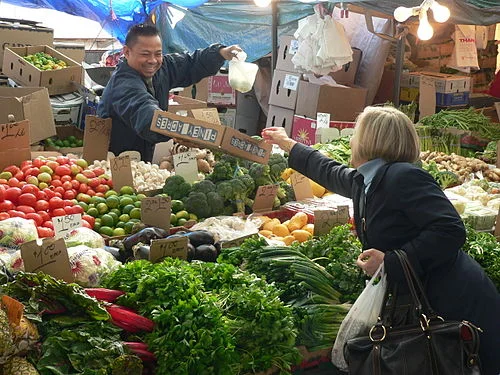Via The New England Journal of Higher Education, a service of The New England Board of Higher Education (nebhe.org)
CAMBRIDGE, Mass.
Food insecurity—defined by the nationally respected Wisconsin HOPE Lab as the limited or uncertain availability of nutritionally adequate and safe foods, or the ability to acquire such foods in a socially acceptable manner—is a troubling trend on college campuses across the country, including in New England.
For example:
A 2016 survey by the Massachusetts Department of Higher Education found that 24 campuses operated or partnered with a food pantry, and a third saw an increase in the number of students utilizing that service.
A 2018 report by the HOPE Lab found that 44% of Massachusetts students at two-year colleges and a third of students at four-year universities were food insecure.
A 2018 study of nearly 1,000 students at the University of New Hampshire found 25% had experienced food insecurity in the past year, with first-generation students and students who receive financial aid at higher risk.
A 2017 study of several thousand students at the University of Vermont found up to 25% were food insecure, with significantly higher rates among students who identify as first-generation, persons of color, and transgender/queer/non-conforming.
As higher education becomes available to many who never before had access, more students than ever are forced to choose between meeting their basic needs and the costs of attending college. While institutions devise strategic solutions to avert this burgeoning crisis, one avenue of support that many students are not taking advantage of is the federal Supplemental Nutrition Assistance Program (SNAP).
In January, the U.S. Government Accountability Office (GAO) issued a report, titled Better Information Could Help Eligible College Students Access Federal Food Assistance Benefits, which acknowledges for the first time at the federal level the problem of college food insecurity.
The GAO goes on to recommend SNAP as a way to help many of these students cover their basic needs. Although a 1980 federal law bars college students from accessing SNAP—based on the outdated assumption that students’ parents will support them—it does grant exemptions for students who demonstrate need, for example, by working at least 20 hours per week or having dependent children. The GAO estimates that these criteria cover over 3 million low-income students nationwide, yet nearly two thirds of those eligible do not access SNAP benefits. How can we get more students who need assistance to sign up for SNAP?
The GAO puts its answer right in the title: Better Information. Many students are unaware of their eligibility, and many colleges are confused by the byzantine rules set forth by the federal Food and Nutrition Service (FNS). The GAO’s main recommendation to remedy this situation is for FNS to clarify the eligibility criteria on its website and make that information easier to find. While these steps will no doubt help, we now know too much about human psychology to think that better information is sufficient to solve this problem. We need to leverage behavioral science to nudge more students to access SNAP.
Behavioral science uses evidence-based strategies to frame and disseminate “better” information in a way that motivates action. These techniques are especially valuable when confronting food insecurity, a problem hidden by many students out of shame. Examples of these behavioral techniques include:
Social norms. The GAO reports that 80% of colleges surveyed struggled with “overcoming the stigma some students associate with accepting help for their basic needs.” Messaging that normalizes seeking help (e.g., “Many college students need help paying for food …”) can ameliorate that stigma by letting students know that they’re not alone in their challenge and move them to access needed resources.
Loss aversion. According to prospect theory, losing $10 is more painful than winning $10 is joyful. An MDRC study that leveraged loss aversion (e.g., “Don’t miss out! Ends April 29!”) increased attendance at an eligibility meeting for an income-supplement program by 73%. Messages that reframe SNAP as a benefit that can be lost, rather than something to be acquired, could motivate student uptake.
Removing hassle factors. Every step in applying for public benefits is a hurdle that can trip people up. A recent experiment by the U.S. Department of Health and Human Services showed that eliminating a prescreening form increased completed applications to adjust child-support payments by more than 12 percentage points. Colleges can remove hassle factors for students needing SNAP by housing related offices (e.g., financial aid; food pantry; counseling) within a single building, using student data already in their possession to automatically prescreen students for benefits, and streamlining application processes as much as possible.
Do techniques like these actually help students with food insecurity? Yes. My colleagues and I at Persistence Plus work with colleges across the country to enhance their student success initiatives through behavioral science. With regard to basic needs insecurity, colleges have witnessed firsthand how behavioral science increases the number of students who benefit from valuable campus resources, like food pantries and emergency aid. For example, an Ohio community college saw a 51% increase in use of the food pantry in just one month after students received a text message from us, such as “Some students miss meals due to $ but they’ve found help at the food pantry. Do you face this challenge?” Students who responded in the affirmative were provided with further social norming to reduce stigma and information on how to access emergency aid.
Behavioral science could enhance the impact of the myriad efforts of New England colleges to support students facing basic needs insecurity.
For example, Bunker Hill Community College, in Charlestown, Mass., has been a national leader in addressing food insecurity. Bunker Hill now houses New England’s first Single Stop location. This “one-stop shop” for connecting students to public benefits has been shown to increase persistence at U.S. community colleges by up to 11%. Bunker Hill is also evaluating a food voucher program that provides eligible students with $25 per week to spend at on-campus food service venues.
Many other colleges have now opened food pantries, such as the Magic Food Bus at Middlesex Community College, in Middletown, Conn. This renovated school bus (minus Ms. Frizzle’s pet lizard) has provided hundreds of students with non-perishable food, toiletries and other essentials. The University of Vermont this year piloted a meal-sharing program, operated by Swipe Out Hunger, where students with unlimited dining hall plans can donate meals to students with limited access. As these programs continue and expand, colleges should keep in mind how their messaging around basic needs insecurity could benefit from behavioral science to drive students to these resources.
The GAO’s recommendation to revamp the FNS website and make college students’ SNAP eligibility easier to understand is an important step, but behavioral science can take us further by enhancing the impact of better information using low-cost and evidence-based strategies. Stakeholders at the federal, state, and local levels should consider not only how to raise awareness of SNAP among colleges and students, but also how to leverage behavioral science to increase use of these funds so desperately needed by so many.
Ross E. O’Hara is a behavioral researcher at Persistence Plus. He shares his thoughts on behavioral science in higher education monthly in his blog, “Nudging Ahead.”

















